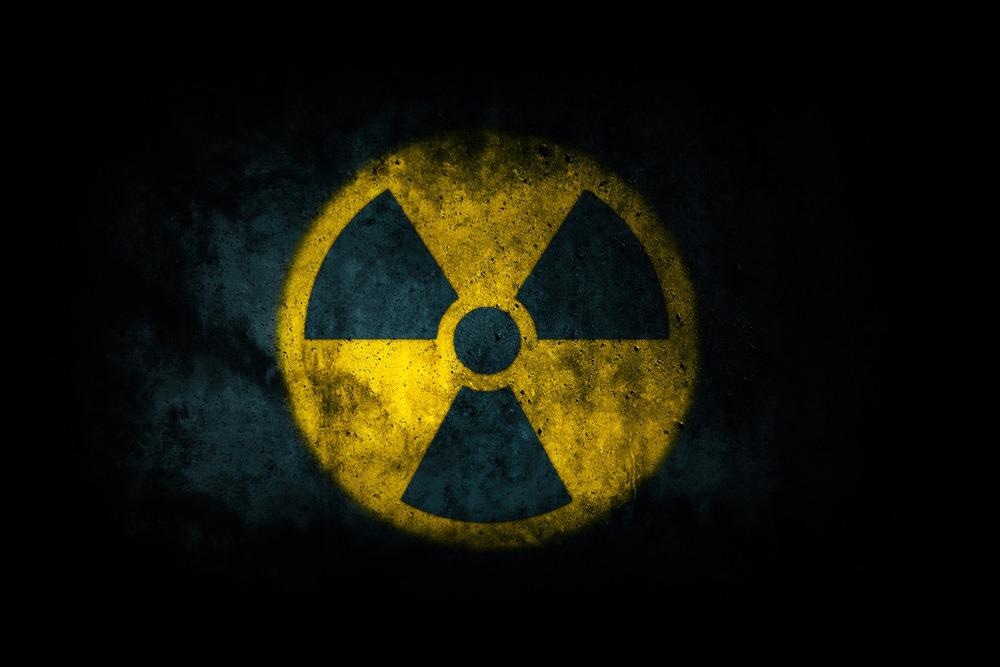In a recent study published in the Journal of Non-Crystalline Solids, a group of researchers explored the nanostructure of borosilicate glass as a substrate for high-level nuclear liquid waste under the influence of the additives Na2O and CaO/ZnO.

Study: Nanoscopic structure of borosilicate glass with additives for nuclear waste vitrification. Image Credit: fewerton/Shutterstock.com
These additives are used to reduce the melting temperature of the glass, prevent morphological dissociation, and improve biochemical stability.
Borosilicate Glass for Nuclear Waste Vitrification
It is necessary to eliminate uranium and plutonium components from nuclear fuel refining by the use of a liquid extraction technique known as the PUREX method. This approach generates a considerable volume of high-level nuclear liquid waste (HLLW) that contains radioactive elements.
After burying, HLLW is often preserved via vitrification, which involves using borosilicate glass to prevent its movement into the environment.
Borosilicate glass has a lower melting temperature and is more resistant to moisture and chemicals than silicate glass, allowing it to last longer in hardened waste glass storage sites. The structural and biochemical integrity of reprocessed radioactive waste is critical for assuring long-term storage in a secure environment.
Factors Affecting Nuclear Waste Vitrification Process
Hundreds of transition metals form oxides in borosilicate glass in most nuclear reactions. Metal oxides can manifest and phase detach, causing heterogeneities in the crystal that can cause it to break. Transition metals, in general, are sparsely solvable in glass.
During untreated vitrification, they are prone to form crystal oxides that build at the base of the melter, increasing the electric conductance and fluidity of the glass. This action disrupts the vitrification process, and the imperfection generated by precipitation impacts the glass's mechanical qualities.
Similarly, insoluble accumulations of alkali molybdate nanocrystals, also known as the yellow phase, form in the glass. Because these chemicals are soluble in water, they may pose a danger to the environment. Metallic ions may also operate as mesh networks, breaking chemical connections in the glass structure and becoming part of it by altering the initial metal oxides, or as charge converters at charge-defective spots in the glass.
Nanostructure Study of Borosilicate Glass
Many investigations into the sub-nanometer architecture of borosilicate glass both with and without metallic oxides as reinforcements have been conducted before.
For example, X-ray diffraction indicated the host glass' architecture and whether the metallic oxides were integrated into the glass structure. Under specific circumstances, the Bragg ridges in XRD detected the development of crystallized oxides caused by oxidation reactions in the glass. The connection and chemistry of alkaline and alkaline earth metals in glass were studied using X-ray absorption fine structure (XAFS). This is because each element in the spent nuclear fuel vitrification process has a unique absorption coefficient.
Even though structural investigations utilizing the techniques outlined above have had a lot of success, they are limited to length scales of less than 1 nm.
As a result, more research is needed to determine the properties and microarchitectures of the glass on the nano- and meso-dimensions to fully understand their potential for spent nuclear fuel vitrification. This is because gaining a better knowledge of how these compounds affect the borosilicate nanoparticle structure will help develop radioactive material vitrification.
In this study, the researchers used small-angle neutron scattering (SANS) in combination with neutron radiography and X-ray crystallography to explore the nanoparticle composition of borosilicate glass as a substrate for nuclear waste cryopreservation in the vicinity of standard catalysts, Na2O and CaO/ZnO with and without Li2O.
Research Findings and Conclusion
The CaO/ZnO additions resulted in heterogeneities of many nanometers in size. However, these characteristics were decreased by the coaddition of Li2O with CaO/ZnO.
These nanoparticle structures affected borosilicate glass' function as HLLW hosts by affecting parameters such as the number of metallic oxides the glass can absorb, adsorption behavior, and structural strength. Certain metallic oxides did not scatter uniformly in the nano-inhomogeneous glass.
The composition of the glass' nanoparticle structure should be taken into account while determining the high-performance HLLW host glass and the particle arrangement of the glass frame. These structural findings are expected to make a substantial contribution to the development of vitrification procedures for the management of HLLW.
Continue reading: Researching Carbon Atoms to Aid the Discovery of New-Generation Ceramics.
Reference
Motokawa, R. et al. (2021). Nanoscopic structure of borosilicate glass with additives for nuclear waste vitrification. Journal of Non-Crystalline Solids. Available at: https://www.sciencedirect.com/science/article/abs/pii/S0022309321007134
Disclaimer: The views expressed here are those of the author expressed in their private capacity and do not necessarily represent the views of AZoM.com Limited T/A AZoNetwork the owner and operator of this website. This disclaimer forms part of the Terms and conditions of use of this website.